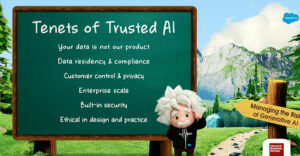
Social media is often held up as the wind sock to gauge how fast the winds of change are blowing. When Google+ gained 25 million users in just six weeks, it was used as evidence that people had become willing to shift the channels and methods they used to communicate at the drop of a hat in our new, technologically accelerated age.
Of course, since the spike in September when the doors to the site were thrown open to the general public, Google+ adoption has trailed off significantly, with traffic sinking to 70 percent of its peak rates at times.
Why did that happen? You can pontificate about the characteristics of Google+ at length, but I think it has something to do with the human reaction to change: Investing effort to understand the new site delivered less of a payoff than relying on understood channels like Facebook and Twitter.
The experience Google+ offers hasn’t yet become sufficiently compelling to dislodge larger numbers of people from their set routines — and set routines themselves have a measure of power that is hard to overcome.
Thinking vs. Doing
That very human phenomenon is also present in the CRM world. On the one hand, you have technology and CRM-thinking racing ahead. Social CRM (SCRM) is barely a reality — appearing in a fully realized form in only a few businesses thus far — and yet there’s already some clamoring for the next wave of thinking.
On the other hand, you have the reality of organizations — they move far slower than the speed of ideas. Even if there’s one person on staff who completely grasps the implications and possibilities of a revolutionary way of changing the business — like SCRM — a lot of evangelizing to employees and management will be necessary in order for those ideas to manifest themselves in ways that change the business, unless that person is high in the C-level, of course.
There’s a disconnect, then, between the speed of revolutionary thinking and the speed of understanding, internalizing and reorganizing around that thinking at the organizational level. That’s a factor right now as businesses struggle with the undeniable force that social media represents.
The mismatched velocities of the thinkers and the people who need to turn that thinking into action within organizations is leading to a slow revolution — a painful period in which the possibilities are clearly evident, but we are prevented from achieving them by issues not of technology or vision, but of organizational entropy.
In With the New
There are two ways, in theory, to bridge the divide between the thinking and the doing: slowing down the thinkers and speeding up the organization’s ability to change. The former is seemingly impossible — and yet it’s not; in CRM, we’ve seen the leading pundits focused on SCRM for the last half-decade, and rather than making the next leap (perhaps to the idea of business being social in its entirety), they’re honing their views of what SCRM should look like.
The other way is to speed up the organization’s ability to change. This is a management mantra, and yet it remains exceptionally hard to do. Humans working in teams are simply not that great at rewriting the rules on the fly; getting a set of processes in place is stressful, and executing those processes is no less so. Thus, the idea of defaulting to a condition of constant stress is not appealing.
Can managers, especially in large organizations, change that attitude and create environments that make it easier to adapt to the new? New customer behaviors and desires, new technologies, new internal processes? That seems almost mandatory in the zero-to-25-million-user world we already live in.
Humans have limits that technology does not — we’ll always be somewhat behind the eight ball in that way. But the winners of the slow revolution will be the ones who realize that the most important variable in the equation is the rate at which their customers change. Only when you understand what that change is and how rapidly it is progressing can you adjust your internal changes appropriately.
























































Social CRM
See all Social CRM